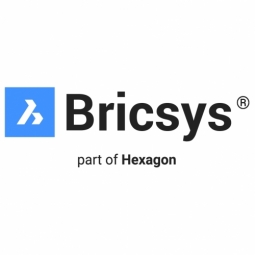技术
- 平台即服务 (PaaS) - 应用开发平台
适用行业
- 建筑物
- 建筑与基础设施
适用功能
- 产品研发
用例
- 快速原型制作
- 虚拟原型与产品测试
关于客户
TAL Engineering 是一家位于保加利亚的最先进的幕墙制造商。该公司成立于 1998 年,是国内最早提供 PVC 和铝结构及外墙的公司之一。在过去的 22 年里,联业工程通过开发现代玻璃结构和建筑围护结构解决方案,塑造了当代保加利亚环境的面貌。该公司被誉为当地市场无可争议的领导者,在索非亚的外墙设计部门拥有一支由 17 名工程师组成的团队。他们从事需要非常详细和定制的外墙解决方案的建筑项目。
挑战
联业工程是保加利亚一家领先的外墙制造商,在交付复杂的外墙项目时面临着挑战。该公司在索非亚的 17 名工程师团队正在开展需要非常详细的定制外墙解决方案的建筑项目。该团队在其职业生涯的大部分时间里都在使用 AutoCAD®,但他们需要一种能够处理即将到来的项目(包括 NV Tower)的各种特定要求的技术。我们面临的挑战是找到一个 CAD 平台,能够适应其外观设计的不寻常和复杂的特征,同时使他们的设计到制造工作流程更加高效。
解决方案
在评估了各种 CAD 平台后,联业工程决定引入 BricsCAD® 作为他们选择的 CAD 工具。 BricsCAD 凭借其独特的钣金建模功能,被发现最适合适应 TAL 外墙设计的不寻常且复杂的特征。它还承诺使他们的设计到制造工作流程更加高效。 BricsCAD 具有吸引力的价格和灵活的许可选项是影响 TAL 决定用更现代的平台替换现有 CAD 软件的额外因素。对于 Kolev 的大型设计师团队来说,从 AutoCAD 到 BricsCAD 的过渡非常顺利,因为 BricsCAD 与 AutoCAD 兼容。
运营影响

Case Study missing?
Start adding your own!
Register with your work email and create a new case study profile for your business.
相关案例.

Case Study
Energy Saving & Power Monitoring System
Recently a university in Taiwan was experiencing dramatic power usage increases due to its growing number of campus buildings and students. Aiming to analyze their power consumption and increase their power efficiency across 52 buildings, the university wanted to build a power management system utilizing web-based hardware and software. With these goals in mind, they contacted Advantech to help them develop their system and provide them with the means to save energy in the years to come.

Case Study
IoT System for Tunnel Construction
The Zenitaka Corporation ('Zenitaka') has two major business areas: its architectural business focuses on structures such as government buildings, office buildings, and commercial facilities, while its civil engineering business is targeted at structures such as tunnels, bridges and dams. Within these areas, there presented two issues that have always persisted in regard to the construction of mountain tunnels. These issues are 'improving safety" and "reducing energy consumption". Mountain tunnels construction requires a massive amount of electricity. This is because there are many kinds of electrical equipment being used day and night, including construction machinery, construction lighting, and ventilating fan. Despite this, the amount of power consumption is generally not tightly managed. In many cases, the exact amount of power consumption is only ascertained when the bill from the power company becomes available. Sometimes, corporations install demand-monitoring equipment to help curb the maximum power demanded. However, even in these cases, the devices only allow the total volume of power consumption to be ascertained, or they may issue warnings to prevent the contracted volume of power from being exceeded. In order to tackle the issue of reducing power consumption, it was first necessary to obtain an accurate breakdown of how much power was being used in each particular area. In other words, we needed to be able to visualize the amount of power being consumed. Safety, was also not being managed very rigorously. Even now, tunnel construction sites often use a 'name label' system for managing entry into the work site. Specifically, red labels with white reverse sides that bear the workers' names on both sides are displayed at the tunnel work site entrance. The workers themselves then flip the name label to the appropriate side when entering or exiting from the work site to indicate whether or not they are working inside the tunnel at any given time. If a worker forgets to flip his or her name label when entering or exiting from the tunnel, management cannot be performed effectively. In order to tackle the challenges mentioned above, Zenitaka decided to build a system that could improve the safety of tunnel construction as well as reduce the amount of power consumed. In other words, this new system would facilitate a clear picture of which workers were working in each location at the mountain tunnel construction site, as well as which processes were being carried out at those respective locations at any given time. The system would maintain the safety of all workers while also carefully controlling the electrical equipment to reduce unnecessary power consumption. Having decided on the concept, our next concern was whether there existed any kind of robust hardware that would not break down at the construction work site, that could move freely in response to changes in the working environment, and that could accurately detect workers and vehicles using radio frequency identification (RFID). Given that this system would involve many components that were new to Zenitaka, we decided to enlist the cooperation of E.I.Sol Co., Ltd. ('E.I.Sol') as our joint development partner, as they had provided us with a highly practical proposal.

Case Study
Intelligent Building Automation System and Energy Saving Solution
One of the most difficult problems facing the world is conserving energy in buildings. However, it is not easy to have a cost-effective solution to reduce energy usage in a building. One solution for saving energy is to implement an intelligent building automation system (BAS) which can be controlled according to its schedule. In Indonesia a large university with a five floor building and 22 classrooms wanted to save the amount of energy being used.

Case Study
Powering Smart Home Automation solutions with IoT for Energy conservation
Many industry leaders that offer Smart Energy Management products & solutions face challenges including:How to build a scalable platform that can automatically scale-up to on-board ‘n’ number of Smart home devicesData security, solution availability, and reliability are the other critical factors to deal withHow to create a robust common IoT platform that handles any kind of smart devicesHow to enable data management capabilities that would help in intelligent decision-making

Case Study
Splunk Partnership Ties Together Big Data & IoT Services
Splunk was faced with the need to meet emerging customer demands for interfacing IoT projects to its suite of services. The company required an IoT partner that would be able to easily and quickly integrate with its Splunk Enterprise platform, rather than allocating development resources and time to building out an IoT interface and application platform.








